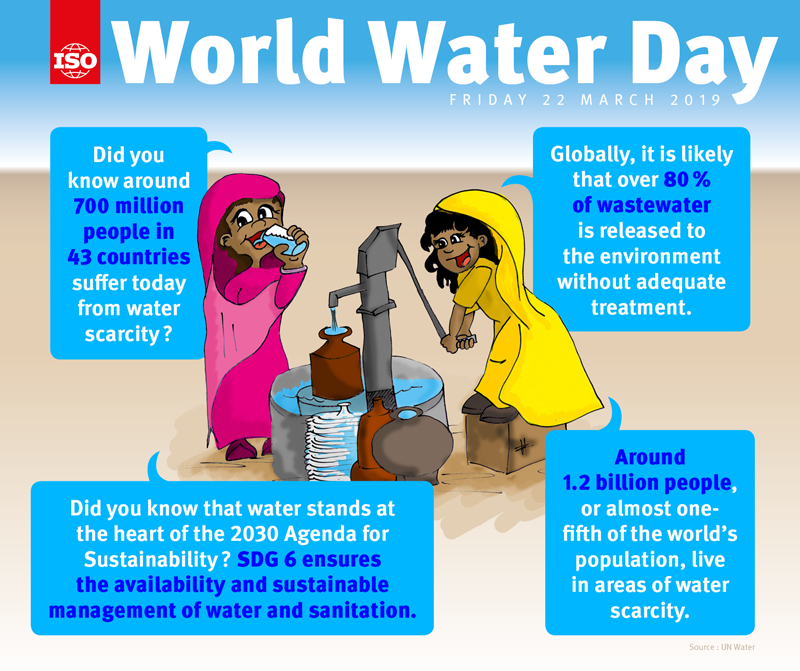| A standard for water reuse brings hope for water scarcity |
| Date: 2019-03-26 Source:ISO website |
|
By 2030, water scarcity will have displaced between 24 and 700 million people, according to UN Water, the United Nations coordinating body on water issues. World Water Day is focusing on Sustainable Development Goal (SDG) 6, which means ensuring access to water and sanitation for all by 2030. What is keeping us from getting there and how can ISO standards make a difference?
Celebrated each year on 22 March, World Water Day puts the spotlight on the importance of freshwater. This year's edition, "Leaving no one behind", adapts the central promise of Agenda 2030 that progress achieved through sustainable development should be available to all. The Agenda, which is the United Nations' roadmap to transform the world by 2030, includes a Sustainable Development Goal specifically dedicated to water - SDG 6. ISO has developed more than 1 400 standards relating to water, each representing best practice in a number of sectors including water quality, water supply, wastewater and stormwater systems, and infrastructure. In particular, a new standard on water reuse could make a significant impact for water scarcity. Water use has been growing globally at more than twice the rate of population increase in the last century. Water shortage in arid parts of the globe has placed heavy pressure on urban areas, where about 55 % of the world population resides (UN). ISO technical committee ISO/TC 282 on water reuse, through its subcommittee SC 2, Water reuse in urban areas, is working hard to address the water shortage crisis in cities. Its new International Standard ISO 20760-1 offers guidelines on how to make use of reclaimed water in order to satisfy water demands and alleviate heavy pressure on urban areas. Another key standard addressing SDG 6 is ISO 30500 on non-sewered sanitation systems. An estimated 1.8 billion people across the globe are using a source of drinking water that is faecally contaminated, with such adverse consequences as disease, malnutrition, poverty, and child death. By offering basic requirements for the design and testing of stand-alone faecal sludge treatment units, ISO 30500 will help address the health needs of many communities worldwide. Together these two standards will promote economic, social and environmental sustainability. World Water Day 2019 theme: Leaving no one behind |
|
Attachments:
|
|
